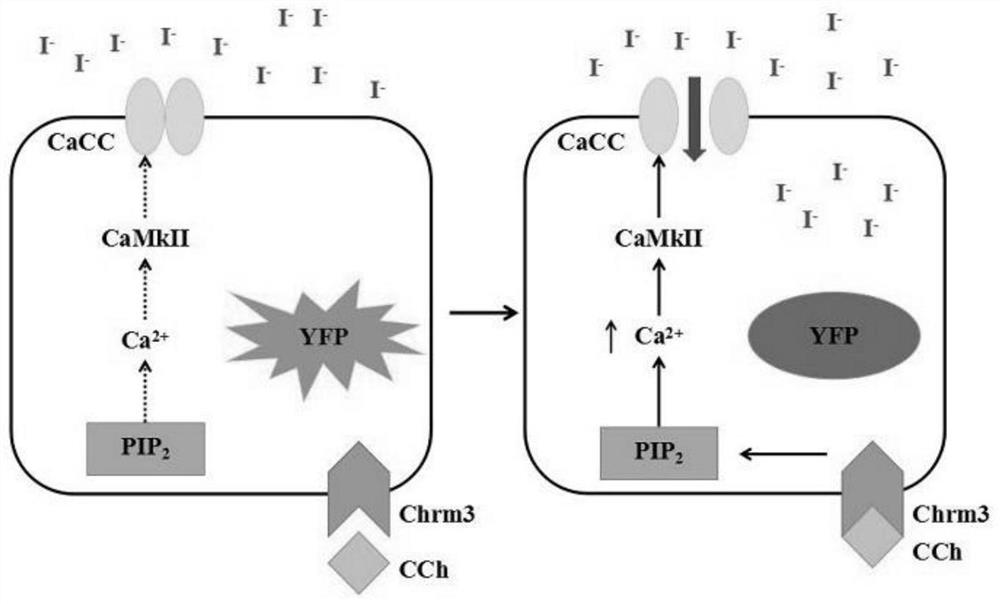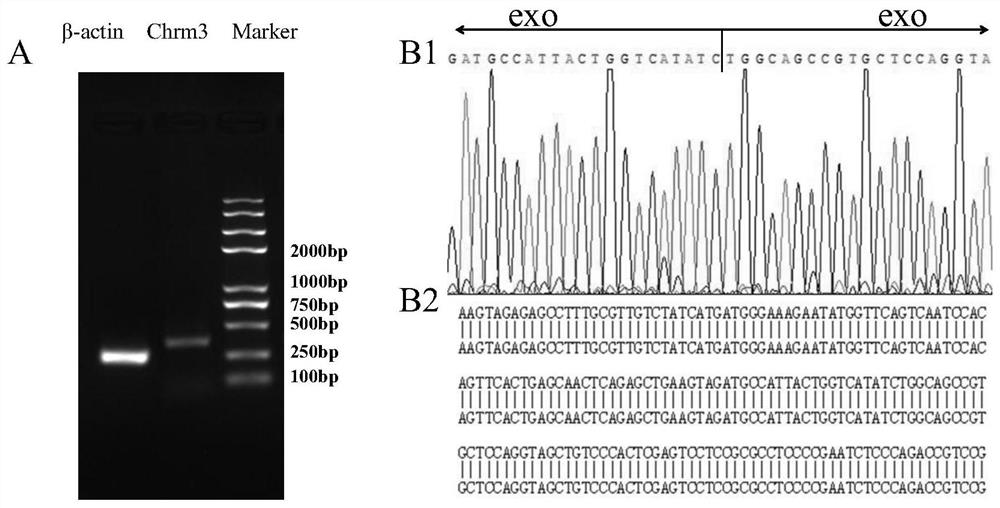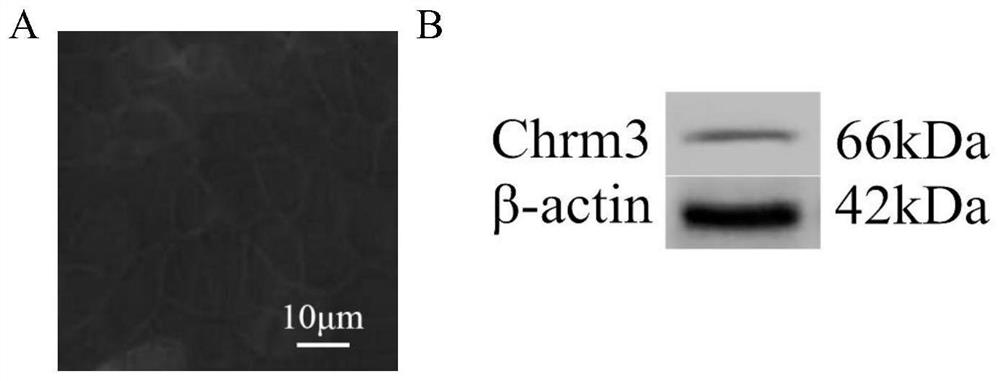Application of FRT cell strain in preparation of preparation or kit for screening Chrm3 regulator
A cell line and regulator technology, applied in the field of biomedicine, can solve the problems of interference, long cycle, complicated operation and so on
- Summary
- Abstract
- Description
- Claims
- Application Information
AI Technical Summary
Problems solved by technology
Method used
Image
Examples
Embodiment 1
[0080]Example 1 Determination of endogenous expression of Chrm3 in FRT cells
[0081]1 RT-PCR detection of Chrm3 expression
[0082]First use TRIzol method to extract total RNA from FRT cells. The general method is as follows: Harvest FRT cells (1~5)×106, Add 1ml Trizol to lyse the cells and add 0.2ml chloroform to shake and mix, then centrifuge, centrifuge at 10000g for 15min. Take the upper colorless water phase, add 0.5ml isopropanol, and precipitate RNA with alcohol. After standing at room temperature for 10 minutes, centrifuge at 10000g for 10 minutes. The RNA was washed with 75% ethanol in DEPC water and centrifuged at 7500g for 5 min. After drying at room temperature, add 20 μl DEPC water to obtain an RNA solution. Use Nanodrop 2000 to detect RNA concentration, perform agarose gel electrophoresis on RNA solution to detect RNA integrity, and then use reverse transcription kit to reverse transcription to obtain cDNA solution. This study used 2×EasyTaq PCR SuperMix, and designed and s...
Embodiment 2
[0100]Example 2 Construction of cell model co-expressing ANO1 and YFP-H148Q / I152L
[0101]1 Construction of a cell line co-expressing ANO1 and YFP-H148Q / I152L
[0102]The FRT cell line expressing ANO1 has been constructed in our laboratory in the early stage, and the YFP-H148Q / I152 plasmid was transfected into FRT cells stably expressing ANO1 according to the Lipofectamine 3000 instructions, and the transfected cells were screened with the optimal concentration of G418 antibiotic Two weeks later, a suitable single-cell clone group was selected for limiting dilution in a 96-well plate, and the positive cloned cell line was expanded and cultured to obtain an FRT cell line co-expressing ANO1-YFP-H148Q / I152L.
[0103]2 Fluorescence quenching kinetics experiment to identify the validity of the cell model
[0104]The FRT cells stably co-transfected with ANO1-YFP-H148Q / I152L were seeded in a 96-well plate with a black wall and a transparent bottom, and cultured for 18 hours. The cells were divided int...
Embodiment 3
[0105]Example 3 Verification of the effectiveness of cell model screening of Chrm3 modulators
[0106]1 Detection of Ca by Fura-2 fluorescent probe method2+The change
[0107]The FRT cells stably co-expressing ANO1-YFP-H148Q / I152L were digested and centrifuged to make a cell suspension, added Fura-2 / AM (final concentration 5μM), incubated at 37°C for 30 min, and gently shaken. The cells were washed once with calcium and magnesium-free PBS buffer to remove Fura-2 / AM remaining outside the cells. After centrifugation, calcium and magnesium-free PBS buffer was added to make a cell suspension. In the Fluostar multi-function microplate reader, the fluorescence intensity was recorded at 510nm using 340 and 380nm dual excitation sources. During the measurement, the fluorescence ratio of 340nm / 380nm was recorded at rest and after adding different concentrations of CCh (Chrm3 activator). TritonX-100 and EGTA were added to determine the maximum and minimum fluorescence. Calculate Ca based on fluores...
PUM
 Login to View More
Login to View More Abstract
Description
Claims
Application Information
 Login to View More
Login to View More - R&D
- Intellectual Property
- Life Sciences
- Materials
- Tech Scout
- Unparalleled Data Quality
- Higher Quality Content
- 60% Fewer Hallucinations
Browse by: Latest US Patents, China's latest patents, Technical Efficacy Thesaurus, Application Domain, Technology Topic, Popular Technical Reports.
© 2025 PatSnap. All rights reserved.Legal|Privacy policy|Modern Slavery Act Transparency Statement|Sitemap|About US| Contact US: help@patsnap.com



